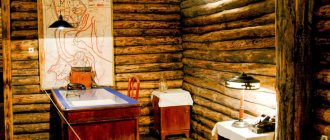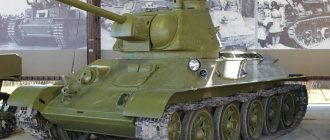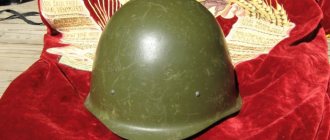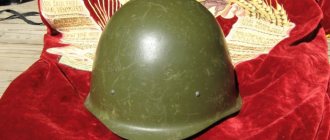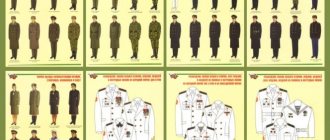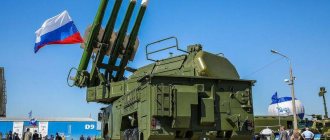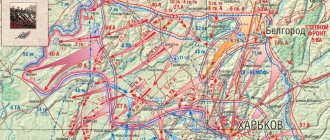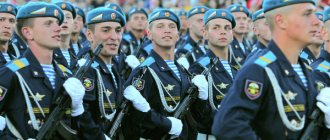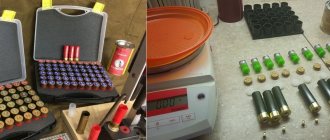Kursk Bulge
On July 5, 1943, the Battle of Kursk, also known as the Battle of Kursk . This is one of the key battles of the Second World War and the Great Patriotic War, which finally consolidated the radical turning point during the Great Patriotic War, which began at Stalingrad. The offensive was launched by both sides: both the Soviet and the German. The Wehrmacht's summer strategic offensive on the northern and southern fronts of the Kursk bridgehead was called Operation Citadel.
According to Soviet and Russian historiography, the battle lasted 49 days, it included: Kursk strategic defensive operation (July 5 - 23), Oryol (July 12 - August 18) and Belgorod-Kharkov (August 3 - 23) strategic offensive operations.
Battle of Kursk during the Great Patriotic War (1943)
Soviet military intelligence managed to timely reveal the preparations of the German army for a major offensive on the Kursk Bulge. Having analyzed the situation, the Headquarters of the Supreme High Command (SHC) decided to temporarily go on the defensive in the Kursk salient and, during the defensive battle, bleed the enemy’s strike forces and thereby create favorable conditions for the Soviet troops to launch a counteroffensive, and then a general strategic offensive.
The troops of the Central (commander - Army General Konstantin Rokossovsky), Voronezh (commander - Army General Nikolai Vatutin) and Steppe (commander Colonel General Ivan Konev) fronts involved in the Kursk operation numbered over 1.9 million people, more than 26.5 thousand guns and mortars, more than 4.9 tanks and self-propelled artillery units (SPG), about 2.9 thousand aircraft. Soviet troops outnumbered the enemy group opposing them near Kursk in personnel by 2.1 times, in artillery by 2.5 times, in tanks and self-propelled guns by 1.8 times, and in aircraft by 1.4 times. The defense of the Soviet troops was deeply echeloned positional, anti-tank and anti-aircraft.
The Battle of Kursk began on the morning of July 5, 1943, when German strike groups, weakened by preemptive artillery counter-training of Soviet troops, went on the offensive, throwing up to 500 tanks and assault guns against the defenders in the Oryol-Kursk direction, and about 700 in the Belgorod-Kursk direction. The advancing ground forces were supported by air strikes. Heavy and stubborn fighting ensued. The offensive of the German troops was finally stopped on July 10 in the Central Front, where the enemy managed to wedge into the defense by 8-12 kilometers, and on July 12 in the Voronezh Front, where his troops wedged into the defense up to 35 kilometers.
Convinced of the complete impossibility of breaking the resistance of the troops of the Voronezh Front, the German command tried to break through their defenses with attacks on Prokhorovka in order to reach Kursk from the southeast. To disrupt the offensive and defeat the enemy strike force, the command of the Voronezh Front launched a counterattack on July 12, which resulted in the Prokhorovka tank battle, which is one of the largest oncoming tank battles of the Second World War. On both sides, up to 1,200 tanks and self-propelled guns (assault guns) took part in it.
The fierce battle lasted all day and ended along the entire front with the troops of both sides going over to the defensive. In one day, the German tank group lost about 10 thousand people and over 360 tanks, and the Soviet tank army lost about 3 thousand people killed and wounded, 350 tanks.
As a result of a fierce battle in the Prokhorovka area, neither side was able to solve the tasks assigned to it: the Germans were able to break through to the Kursk area, and the Soviet tank army was able to reach the Yakovlevo area, defeating the opposing enemy. But the enemy’s path to Kursk was closed. The confrontation between the two groups - the advancing German and the counterattacking Soviet - continued until July 16, mainly on the lines they occupied. On July 16, the withdrawal of the main forces of the German Army Group South began to their original position. The troops of the Voronezh (from July 16) and Steppe (from July 19) fronts, pursuing the retreating enemy troops, by July 23 reached the lines occupied before the start of the defensive operation, and on August 3 launched a counteroffensive in the Belgorod-Kharkov direction.
At this time, the troops of the left wing of the Western, Bryansk and right wing of the Central Fronts during the Oryol operation, which began on July 12, 1943, defeated the Oryol group of German troops (15 divisions) of Army Group Center, liberated Oryol on August 5 and advanced to west to 150 kilometers, where they were stopped.
Troops of the Voronezh and Steppe Fronts liberated Belgorod during the Belgorod-Kharkov operation on August 5. In the evening of this day in Moscow, for the first time during the war, an artillery salute thundered in honor of the troops who liberated Orel and Belgorod.
Developing the offensive and repelling strong counterattacks of the enemy, the troops of the Steppe Front, with the assistance of the Voronezh and Southwestern Fronts, liberated Kharkov on August 23. In three weeks, the troops of the Voronezh and Steppe fronts defeated 15 enemy divisions, advanced in the southern and southwestern directions to 140 kilometers, and expanded the offensive front to 400 kilometers.
The Battle of Kursk was one of the decisive and largest battles of World War II. On both sides, more than four million people, over 69 thousand guns and mortars, more than 13 thousand tanks and self-propelled guns, and up to 12 thousand aircraft were involved in it.
According to Soviet sources, German troops lost 30 divisions in the Battle of Kursk, including seven tank divisions, over 500 thousand soldiers and officers, 1.5 thousand tanks and assault guns, more than 3.7 thousand aircraft, three thousand guns.
The losses of the Soviet troops were: irrevocable - 254,470 people, sanitary - 608,833 people.
In the Battle of Kursk, Soviet soldiers showed courage, perseverance and mass heroism. Over 100 thousand people were awarded orders and medals, 231 people were awarded the title of Hero of the Soviet Union. 132 formations and units received the guards rank, 26 were awarded the honorary titles of Oryol, Belgorod, Kharkov and Karachay.
After the Battle of Kursk, the balance of forces at the front changed sharply in favor of the Red Army, which provided it with favorable conditions for the deployment of a general strategic offensive. Germany and its allies went on the defensive in all theaters of World War II, and the collapse of the fascist bloc began.
In memory of the heroic victory of Soviet soldiers in this battle, the Kursk Bulge Memorial Complex was erected in Kursk.
In accordance with the Federal Law of March 13, 1995 “On the Days of Military Glory (Victory Days) of Russia,” the day of the defeat of the Nazi troops by Soviet troops in the Battle of Kursk, August 23, is the Day of Military Glory of Russia.
(Additional source: Military Encyclopedia. Chairman of the Main Editorial Commission S.B. Ivanov. Military Publishing House. Moscow. in 8 volumes. 2004)
The material was prepared based on information from open sources
What about the Oryol-Kursk arc? Is that also more correct?
In various sources you can find references to the events of July 5 - August 23, 1943 as the “Battle of Oryol-Kursk” and the “Oryol-Kursk Bulge”. For example, in his report at a ceremonial meeting in the Kremlin Palace of Congresses dedicated to the 20th anniversary of the victory of the Soviet people in the Great Patriotic War on May 8, 1965, L. I. Brezhnev says:
“The gigantic battle on the Oryol-Kursk Bulge in the summer of 1943 broke the backbone...”
How often did this spelling occur? We'll find out a little later.
Kursk Bulge. Date of the defensive phase of the battle
After artillery barrage, German tank groups went on the offensive. But they immediately met a worthy rebuff and were firmly stuck in the defensive positions of the Red Army. The Germans repeatedly tried to change the direction of the attack, but this did not change the final result: slow progress with huge losses in manpower and tanks. As a result, they were forced to go on the defensive by July 12.
Defensive phase of the Battle of Kursk
At the end of the defensive phase of the Battle of Kursk, on July 11-12, the famous Battle of Prokhorovka took place, which is considered the largest armored battle in world history.
Where did they call her that?
See the titles of some materials from different years:
- Markin I. I. On the Kursk Bulge . - M.: Voenizdat, 1961. - 124 p.
- Antipenko, N. A. On the main direction (Memoirs of the deputy front commander). — M.: Nauka, 1967. Chapter “ On the Kursk Bulge ”
- O. A. Losik - Head of the Military Academy of Armored Forces, professor, colonel general. From a speech on July 20, 1973 at the Institute of Military History of the USSR Ministry of Defense at a scientific session dedicated to the 30th anniversary of the defeat of Nazi troops on the Kursk Bulge
- Even Brezhnev, in his speech at the ceremonial meeting dedicated to the presentation of the Order of Lenin to Georgia, at the Sports Palace in Tbilisi on November 1, 1966, noted, as if he had not said anything about Orel in 1965:
...we stood to the death at the walls of the legendary Stalingrad and on the Kursk Bulge ...
- Etc.
There will be some interesting statistics below.
In 1944, the Maloarkhangelsk region returned to the Oryol region, and Belgorod became the administrative center of the newly formed Belgorod region only in 1954. The Belgorod arc never became, and the Oryol part was sometimes added - without any visible system.
The arc is fine. Well, is it really the Oryol-Kursk battle? Okay, Kursko-Orlovskaya?
J.V. Stalin, who read a report on November 6, 1943 at a ceremonial meeting of the Moscow Council of Workers' Deputies with party and public organizations of the city of Moscow, says:
From a purely military point of view, the defeat of German troops on our front by the end of this year was predetermined by two important events: the battle of Stalingrad and the battle of Kursk .
Textbooks from different years also keep up:
History of the USSR. Part 3. 10th grade. (A. M. Penkratova. 1952), p. 378.
The Germans hoped to strike from two sides - from the Oryol bridgehead in the north and from the Belgorod region in the south - to encircle and destroy the Soviet troops concentrated in the bend of the Kursk Bulge , and then launch an attack on Moscow.
Ilya Borisovich Berkhin, Maxim Pavlovich Kim, Pyotr Ivanovich Potemkin, History of the USSR (1938-1978) for 10th grade, 1980. Page 68:
§10. Battle of Kursk . Completion of a radical turning point in the war
Methodological manual on modern history. Bogolyubov, Izrailovich, Popov, Rakhmanova. — 1978, p. 165. 2nd question for the lesson:
What was the historical significance of the largest battles of the Second World War - Moscow, Stalingrad, Kursk ?
No matter what, everything they have is Kursk.
The passions of the Germans reached duels
The active operation (which was called “Citadel” - as a symbol of the fortress of the German army in the East) was advocated by the Chief of Staff of the Ground Forces of the Third Reich, General Kurt Zeitzler. He convinced Hitler that with the help of the new Tiger and Panther tanks it was necessary to deliver a powerful blow to the Russians with double coverage and seize the strategic initiative that had passed to the enemy after the Battle of Stalingrad. He was supported by the commander of Army Group Center, Hans Gunther von Kluge.
The commander of Army Group South, Field Marshal Erich von Manstein, and the Inspector General of Armored Forces, Heinz Guderian, were against it, doubting the success of this plan.
Serious passions were boiling. Remembering old grievances, von Kluge and Guderian even challenged each other to a duel, and only the intervention of the Fuhrer cooled their ardor.
As a result, Hitler decided to carry out the general offensive of 1943: “I decided, as soon as weather conditions permitted, to carry out the Citadel offensive (...). This offensive is given decisive importance. It must end with quick and decisive success. The offensive should give us the initiative for the spring and summer of this year.” This was Hitler's original order No. 6 for Operation Citadel. As you can see, we were talking about spring at first. And already in July, a powerful attack on Leningrad was planned: “with the maximum concentration of all available artillery, using the latest offensive weapons.” But then the Fuhrer postponed the deadline until the German industry produced a sufficient number of new tanks and self-propelled artillery units.
At the start of the battle, the German forces taking part in Operation Citadel had 148 Tigers, more than 200 Panthers and 91 Ferdinand self-propelled artillery units, not counting earlier armored vehicles.
It’s still correct - Battle of Oryol-Kursk
If you compare the frequency of mentions on the Internet, the difference is striking:
- “Battle of Oryol-Kursk” - 2 thousand results;
- “Battle of Kursk” - Oryol - 461 thousand results;
- “Oryol-Kursk arc” - 6 thousand results;
- “Kursk Bulge” - Oryol - 379 thousand results;
- “Oryol arc” - 946 results. Indeed, why not.
So, the Battle of Kursk and the Kursk Bulge?
Yes, the Battle of Kursk and the Kursk Bulge. But if for some reason you want to name events, adding the Oryol component, no one minds. Formally, a small piece of the Oryol region was part of the ledge even in 1943.
The fierce battles of the Battle of Kursk left many bodies on the fields of the Maloarkhangelsk region. The second largest mass grave in the Oryol region is located in Protasovo. According to documents, about 4 thousand Red Army soldiers are buried here. Tajiks, Jews, Russians, Ukrainians, Chechens, Bashkirs, Oryols, Kurians, Kamchadals - their names are on the slabs in the same row. Every year, several dozen names are added to this list: relatives look for their soldiers using documents, search engines look at battlefields. The procedure for adding a name to the burial list is very simple; if you find your relative who is not included in the burial list, please contact us and we will tell you how to do this.
Tags: Great Patriotic War, History
